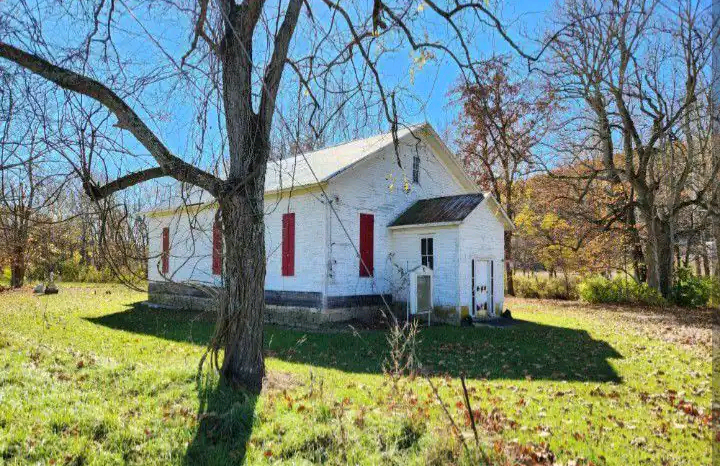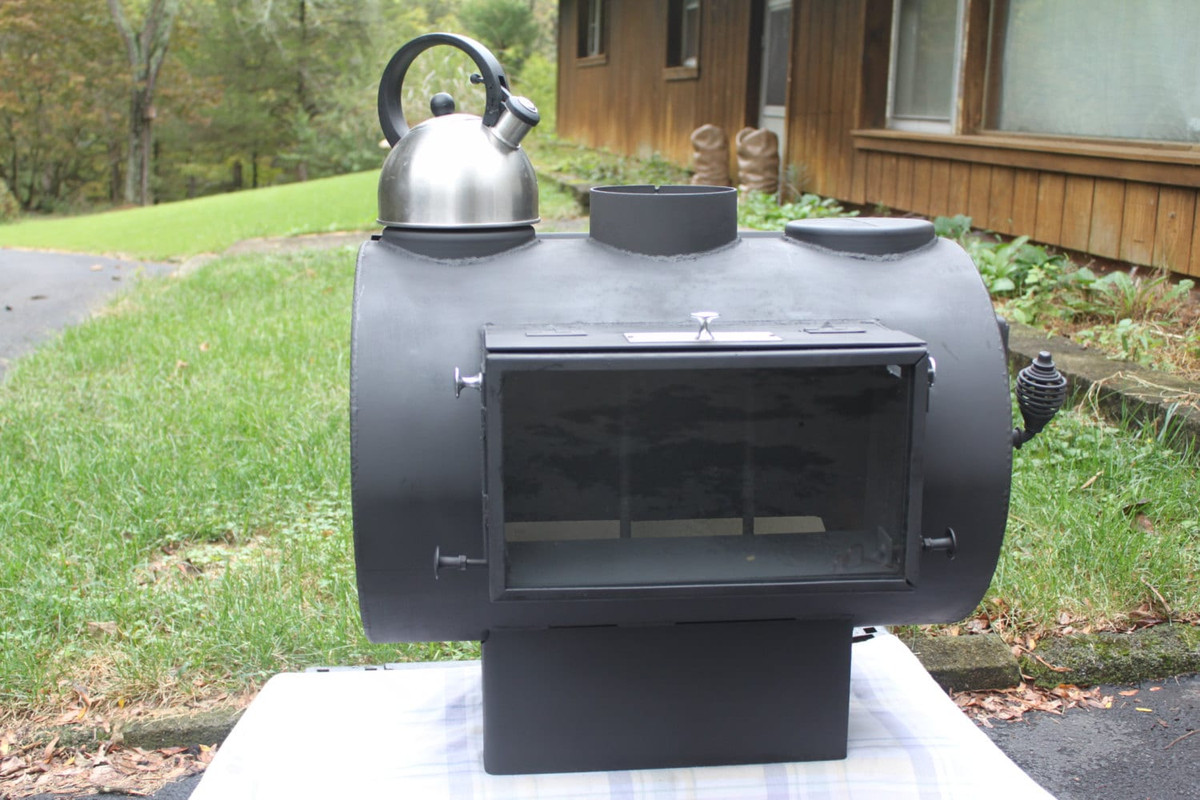Hey guys, kind of at my wits end here. I've been slowly renovating an old church into a little cabin on a stream out in Liverpool PA. It's been a slow process and I've come to the point I was dreading. The stove Install. Mostly because I know nothing about stove piping and drafts.
The church in question.

Stove in question. Shown with just a piece of plexiglass I had to measure for glass.

I restored an old barrel style Fire View wood stove. Fits logs up to 34" in length. The exhaust port is 7".
I have read the sticky about installing a stove. Answered all my clearance questions.
Onto the questions.....
First question:
Should I be adapting up to 8" pipe or down to 6"? Is there a drafting difference?
Second question:
Do I have to use double or triple wall pipe? I understand for the wall thimble but I'm lost on the need for double wall pipe in the church, since it's attached to a huge metal wood stove that's lava hot. I would think single wall is optimal to keep radiating heat while inside the structure. To maximize heat exchange no?
Third question:
Do I need to run a minimum vertical height before turning horizontal out the wall to achieve an appropriate draft? I have 12' ceilings to work with.
Fourth question:
Do I need a dampener in line? Manual vs barometric? How far from the stove? Or is this a wait and see thing?
5th question:
Stove didn't have a glass insert for the face of it. Just a metal grate. Must I order a high temp glass pane for draft reasons? I tried to order a high temp glass pane .25" shorter in width and height than the opening but was told by glass store that glass can expand and contract way more than that and I had to contact the manufacturer for proper measurements.
6th question:
I'm guessing I should run some sort of recirculating fan on the back of the stove. Is that absolutely necessary?
I know about a fire retardant pad and wall behind the stove and pipe. Just the actual plumbing is confusing to me. I tried to call several stove and fireplace shops. No one is interested in the job and no one willing to give advice unfortunately. Better yet? Anyone want to do the job? Or help with it?
Really appreciate the assistance gents!
The church in question.

Stove in question. Shown with just a piece of plexiglass I had to measure for glass.

I restored an old barrel style Fire View wood stove. Fits logs up to 34" in length. The exhaust port is 7".
I have read the sticky about installing a stove. Answered all my clearance questions.
Onto the questions.....
First question:
Should I be adapting up to 8" pipe or down to 6"? Is there a drafting difference?
Second question:
Do I have to use double or triple wall pipe? I understand for the wall thimble but I'm lost on the need for double wall pipe in the church, since it's attached to a huge metal wood stove that's lava hot. I would think single wall is optimal to keep radiating heat while inside the structure. To maximize heat exchange no?
Third question:
Do I need to run a minimum vertical height before turning horizontal out the wall to achieve an appropriate draft? I have 12' ceilings to work with.
Fourth question:
Do I need a dampener in line? Manual vs barometric? How far from the stove? Or is this a wait and see thing?
5th question:
Stove didn't have a glass insert for the face of it. Just a metal grate. Must I order a high temp glass pane for draft reasons? I tried to order a high temp glass pane .25" shorter in width and height than the opening but was told by glass store that glass can expand and contract way more than that and I had to contact the manufacturer for proper measurements.
6th question:
I'm guessing I should run some sort of recirculating fan on the back of the stove. Is that absolutely necessary?
I know about a fire retardant pad and wall behind the stove and pipe. Just the actual plumbing is confusing to me. I tried to call several stove and fireplace shops. No one is interested in the job and no one willing to give advice unfortunately. Better yet? Anyone want to do the job? Or help with it?
Really appreciate the assistance gents!


